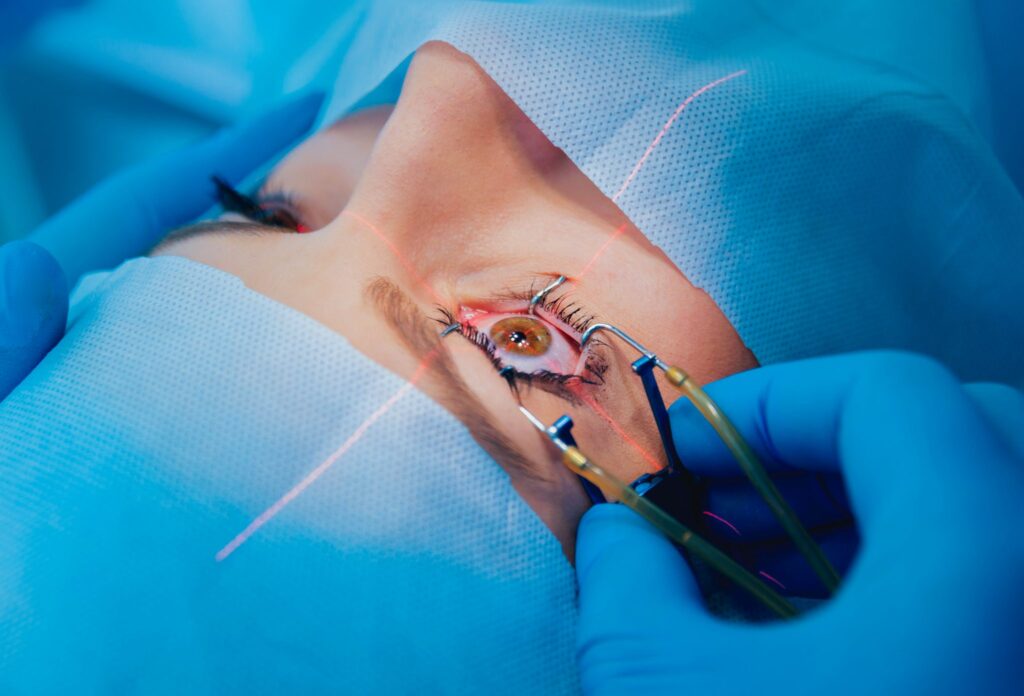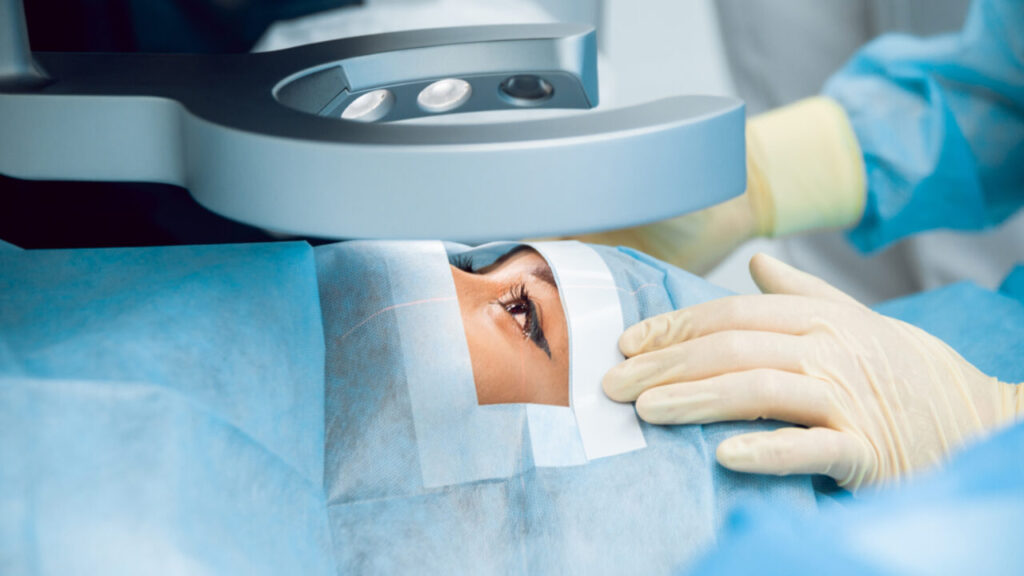Cataract surgery is one of the most commonly performed surgical procedures worldwide. While it is primarily a medical procedure aimed at restoring vision, many patients are concerned about the associated costs. Understanding the various factors that contribute to the total expense can help patients make informed decisions. This article provides an in-depth look at cataract surgery, its costs, and options to manage those costs effectively.
Understanding Cataract Surgery
Cataract surgery is a procedure that removes the cloudy lens from the eye and replaces it with a clear artificial lens. The primary goal of this surgery is to improve vision that has been impaired by cataracts. Typically, cataracts develop gradually as a natural part of aging, but they may also be caused by certain medical conditions or prolonged use of medications. In fact, factors such as diabetes, prolonged exposure to sunlight, and smoking can increase the risk of developing cataracts, making awareness and regular eye check-ups essential for early detection and intervention.
In conclusion, understanding the cataract surgery cost is crucial for anyone considering the procedure. By familiarizing themselves with the different factors influencing costs, patients can better prepare for their surgical journey and explore available options to manage their expenses effectively. Making informed decisions can lead to successful outcomes and restore one of the most vital senses: sight.

What is Cataract Surgery?
The surgery involves the use of advanced techniques and technology to ensure safety and efficacy. In most cases, it is performed on an outpatient basis, meaning patients can return home shortly after the procedure. The surgery itself lasts about 15 to 30 minutes and is usually performed under local anesthesia, with patients often keeping awake but relaxed during the operation. Surgeons may utilize phacoemulsification, a method that uses ultrasound waves to break up the cloudy lens into tiny pieces, which are then gently suctioned out. This technique minimizes trauma to the eye and promotes faster recovery.
The Process of Cataract Surgery
The process begins with a thorough pre-operative examination to assess the patient’s overall eye health and determine the appropriate artificial lens. On the day of the surgery, dilating drops are administered to the patient’s eyes to widen the pupil. Once ready, the surgeon makes a small incision in the eye to remove the clouded lens and replace it with a new one. After the surgery, most patients experience significant improvement in their vision. Post-operative care is crucial; patients are often prescribed eye drops to prevent infection and reduce inflammation, and follow-up appointments are scheduled to monitor healing and vision clarity. Additionally, many patients report a newfound appreciation for activities they once struggled with, such as reading, driving, or enjoying nature, as their vision improves dramatically.
Learn about lasik surgery on: Is Eye Surgery LASIK a Permanent Solution for Vision Problems
Factors Influencing the Cost of Cataract Surgery
The cost of cataract surgery can vary widely depending on several factors. Understanding these can help patients prepare financially and avoid any surprises later on.
Type of Cataract Surgery
There are primarily two types of cataract surgery: phacoemulsification and extracapsular cataract extraction. Phacoemulsification is the most common method and is generally less expensive. It employs ultrasounds to break up the cataract, allowing for a smaller incision and a quicker recovery. Extracapsular extraction is used in more complex cases and usually has a higher cost due to the longer procedure time and more extensive post-operative care required. Additionally, advancements in technology have led to the development of laser-assisted cataract surgery, which can offer improved precision and outcomes but often comes with a higher price tag. Patients should weigh the benefits of these advanced techniques against their costs when considering their options. Read more about incision on https://www.ncbi.nlm.nih.gov/books/NBK541018/
Surgeon’s Experience and Reputation
The surgeon’s expertise can significantly influence the total cost of the procedure. Highly experienced surgeons or those with a reputation for excellence may charge more for their services. Patients may feel more comfortable choosing a more established specialist given the complexity and importance of the surgery, impacting their overall expenses. It’s also worth noting that some surgeons may offer financing options or payment plans, which can help alleviate the financial burden. Patients are encouraged to discuss these possibilities during their consultations, as well as inquire about the surgeon’s success rates and patient satisfaction to ensure they are making an informed choice.
Location and Hospital Fees
The geographic location of the surgery also plays a crucial role in determining costs. In general, urban areas with higher living costs may have more expensive hospital fees compared to rural settings. Additionally, the choice of hospital or surgical center can also affect the total price, as well-regarded institutions tend to charge higher rates for their services. It is important for patients to research various facilities and consider the quality of care provided, as well as any additional amenities that may be included in the overall cost. Some hospitals may offer bundled pricing that covers pre-operative assessments, the surgery itself, and post-operative follow-up visits, which can provide a clearer financial picture for patients.
Breakdown of Cataract Surgery Costs
Understanding the breakdown of costs associated with cataract surgery is key to financial planning. These include pre-operative, surgery, and post-operative expenses.
Pre-operative Costs
Before the surgery, patients may incur costs related to consultations, eye examinations, and diagnostic tests. Typical pre-operative testing includes visual acuity assessments, intraocular pressure checks, and ocular health evaluations. Patients should expect a range of fees for these services depending on their healthcare provider. Additionally, some patients may opt for advanced imaging techniques, such as optical coherence tomography (OCT), which can provide more detailed information about the eye’s structure and assist in surgical planning. This added layer of assessment, while beneficial, can also increase the overall pre-operative costs, so it’s essential to discuss these options with the healthcare provider to understand their necessity and pricing. Click here to read more about pressure.
Surgery Costs
The primary expense of cataract surgery is the surgical fee itself. This can vary based on the type of surgery performed, the chosen intraocular lens, and the surgeon’s rates. In addition, the fees can differ depending on whether the surgery is performed in a hospital or an outpatient center. Patients should inquire about all associated costs upfront to avoid unexpected bills. It’s also worth noting that some patients may qualify for premium lenses, which can enhance visual outcomes but come with higher costs. These lenses can correct astigmatism or provide multifocal vision, allowing patients to see clearly at various distances without glasses. Understanding the differences between standard and premium lenses can help patients make informed decisions that align with both their vision needs and budget.
Post-operative Costs
After surgery, follow-up appointments and medications will be necessary for recovery. Patients often need prescription eye drops to prevent infection and inflammation. Further, routine check-ups are required to monitor the healing process, contributing to the overall cost of the procedure. In some cases, patients may also need additional treatments or adjustments if they experience complications or if their vision does not stabilize as expected. These potential follow-up procedures can add to the financial burden, making it crucial for patients to have a comprehensive understanding of what to expect during the recovery phase. Moreover, it’s advisable for patients to check with their insurance providers regarding coverage for these post-operative services, as this can significantly impact out-of-pocket expenses and help in budgeting for the entire surgical experience.
Insurance and Cataract Surgery
Patients often wonder about insurance coverage when it comes to cataract surgery. It is essential to know what is included under one’s health plan.

What Does Insurance Cover?
Typically, Medicare and many private insurers cover the basic costs associated with standard cataract surgery. This generally includes the surgeon’s fee, facility fee, and basic intraocular lens. However, coverage can vary based on the specific insurance plan, and some costs, such as advanced lenses or additional treatments, may not be fully covered. It’s crucial for patients to review their policy documents or consult with their insurance provider to clarify what is included and what might require additional payment. Some plans may also have specific networks of surgeons or facilities that offer better coverage rates, making it beneficial for patients to choose providers within those networks.
Out-of-Pocket Expenses
Even with insurance, patients may face out-of-pocket expenses such as copays, deductibles, and costs for upgraded lenses or technologies not covered by insurance. Understanding these potential financial responsibilities can help patients budget effectively for their surgery. Additionally, some patients may opt for premium lenses that can correct astigmatism or provide multifocal vision, which can significantly enhance their quality of life post-surgery. However, these premium options often come with a higher price tag, which can lead to unexpected expenses. Patients should also consider discussing payment plans or financing options with their healthcare provider to alleviate the financial burden associated with these additional costs.
Moreover, it’s worth noting that some states have programs designed to assist low-income patients with the costs of cataract surgery. These programs may provide financial aid or even cover the entire procedure for eligible individuals. Patients should inquire about such resources, especially if they are concerned about affording their surgery. Additionally, pre-surgery consultations often provide a comprehensive breakdown of potential costs, allowing patients to make informed decisions about their treatment options and financial commitments.
Ways to Manage Cataract Surgery Costs
Fortunately, there are several strategies patients can adopt to manage the costs associated with cataract surgery.
Payment Plans and Financing
Many facilities offer payment plans or financing options to help patients spread the cost over time. Such arrangements can reduce the burden of upfront payments, allowing patients to receive necessary treatment without immediate financial strain. Inquire with the surgical facility about available options.
Non-Profit Organizations and Assistance Programs
Several non-profit organizations and patient assistance programs provide financial help for those who qualify. These programs might cover part of the surgery or offer discounted rates. Researching available resources can be beneficial in finding the right assistance to alleviate the financial impact of cataract surgery.

